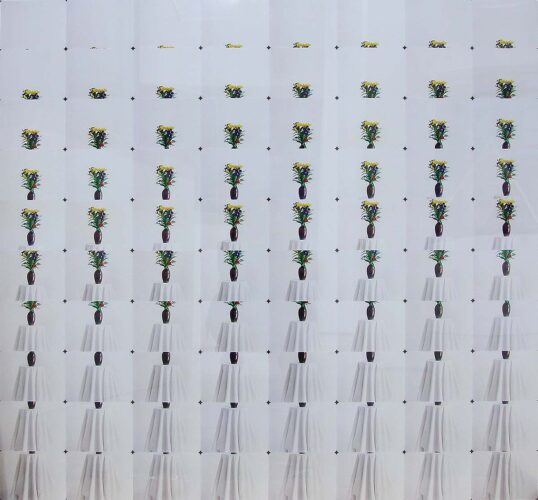EXPOSICIONES
Accionar / Secuenciar. Fotografía en la Colección Helga de Alvear
Heleina Almeida, Nobuyoshi Araki, John Baldessari, Joseph Beuys, Anne & Bernhard Blume, Christine Boshier, Jan Dibbets, Richard Hamilton, Isaac Julien, Robert Kinmont, Jürgen Klauke, Kasper König, Gordon Matta-Clark, Tracey Moffatt, Mabel & Marc Palacín & Viaplana, João Penalva, Liliana Porter, Klaus Rinke, Ugo Rondinone, Eullàlia Valldosera, Jeff Wall
13 sep. — 27 oct. 2024
Biblioteca Central de Cantabria. Sala Concepción Arenal
— Santander
Comisariado por
María Jesús Ávila
Organiza
Gobierno de Cantabria. Consejería de Cultura, Turismo y Deporte a través de la Sociedad Regional de Educación, Cultura y Deporte y PHotoESPAÑA
Colabora
Museo de Arte Contemporáneo Helga de Alvear
Horarios de la sede
Lunes a viernes
9:00–21:00
Sábado y domingo
11:00–20:00
Sede
Biblioteca Central de Cantabria. Sala Concepción Arenal
Ruiz de Alda, 19
Mapa
La exposición pretende trazar algunas de las vías de interrogación sobre el medio fotográfico y sus límites disciplinares planteadas a finales de los años sesenta, cuando los anhelos desmaterializadores de la obra de arte, la importancia que adquiere el proceso, el primado del concepto o la interdisciplinaridad dieron lugar a un cambio de paradigma en el arte.
A través de las fotografías existentes en la Colección Helga de Alvear la muestra sigue el rastro de aquellas obras que, abandonando la autonomía de la imagen única, se apoyan en la contiguidad de los elementos de un conjunto fotográfico para conjugar secuencia y acción y traspasar a la fotografía de la narratividad propia de la imagen en movimiento y de la temporalidad que a esta es inherente. Desde el fotoconceptualismo, que borra los márgenes entre la performance y la fotografía, ya sea como registro de una acción previa, ya sea haciendo de la performance el motivo, hasta los relatos construidos y las realidades fabricadas a los que se llevará la teoría posmoderna en los años noventa. Interesa en este recorrrido encontrar antecedentes en aquellos fotográfos que asumieron el “modo director” en los años setenta y avanzar hasta las narrativas fotográficas de los tableaux vivants, donde realidad y ficción resultan indistinguibles. Además, detenernos en aquellos modos de hacer que se basan en evidenciar el artificio, mediante el absurdo, la fragmentación dispersa o la suspensión de tiempo y movimiento.
La conquista de otros mediums donde la imagen fotográfica, entendida igualmente como multiplicidad secuenciada en un continuum, alcanza nuevas formalizaciones a través de la película y la videoinstalación, sale al encuentro del deseo de expansión de la noción de la fotografía que orienta a PHotoEspaña 2024 y cierra este relato dando un paso más en la cadena de discursos que tejen las articulaciones teóricas de la fotografía contemporánea.
The exhibition aims to trace some of the ways of questioning the photographic medium and its disciplinary limits raised in the late sixties, when the dematerializing yearnings of the work of art, the importance acquired by the process, the primacy of the concept or interdisciplinarity led to a paradigm shift in art.
Through the photographs in the Helga de Alvear Collection, the exhibition follows the trail of those works that, abandoning the autonomy of the single image, rely on the contiguity of the elements of a photographic set to combine sequence and action and transfer to photography the narrative of the moving image and the temporality that is inherent to it. From photoconceptualism, which erases the margins between performance and photography, either as a record of a previous action, or by making performance the motif, to the constructed narratives and fabricated realities to which postmodern theory will lead in the nineties. It is interesting in this journey to find antecedents in those photographers who assumed the «director mode» in the seventies and to advance to the photographic narratives of the tableaux vivants, where reality and fiction are indistinguishable. In addition, we will dwell on those ways of doing that are based on evidencing the artifice, through the absurd, the dispersed fragmentation or the suspension of time and movement.
The conquest of other media where the photographic image, also understood as multiplicity sequenced in a continuum, reaches new formalizations through film and video installation, meets the desire to expand the notion of photography that guides PHotoEspaña 2024 and closes this story by taking another step in the chain of discourses that weave the theoretical articulations of contemporary photography.





